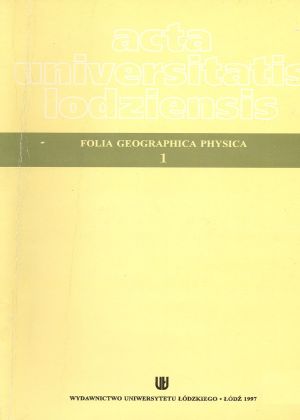Wpływ kopalni węgla brunatnego "Bełchatów" na stosunki wodne małej zlewni nizinnej
The influence of the brown coal mine "Bełchatów" on water conditions of a small lowland basin
Author(s): Gabriel Jeż, Paweł Jokiel, Zygmunt Maksymiuk, Sławomir Mela, Jacek TeodorskiSubject(s): Environmental Geography
Published by: Wydawnictwo Uniwersytetu Łódzkiego
Keywords: Central Poland; lowland basin; water codition
Summary/Abstract: Research on hydrological changes caused by man has been carried out in the Kręcica basin (A = 62 sq km), situated in the Bełchatów region (Fig. l). Three river gauges, a meteorological station, 8 precipitation stations and 9 groundwater observation wells were established within the study area. Hydrometeorological observations and measurements were carried out regularly and the groundwater level was checked once a week. In addition to basic hydrometeorological monitoring, the study involved: annual hydrographic mapping, preparation of lithological map with hydrogeological sections, regular flow rate measurement, examination of ground permeability and moinsture.The main aim of the study was to grasp moment of the changes in hydrological characteristics, especially of hydrographic network, griundwater and discharge. The research led to the establishment of a formula of water balance of a basin disturbed by man. The basic aim of the formula, was to pinpoint in water retention following the development of a cone of depression created by the brown coal mine in Bełchatów.The analyses presented in this paper indicate, that the changes are quantitave and concern retention in saturation zone and groundwater flow (Tab. l). The result also revealed the moment when a radical disturbance of the natural hydrological cycle in the study area occured.Analyses of climatological features (precipitation, evapotranspiration) have not indicated significant permanent changes. However a significal reduction has been identified when discharge, in particular groundwater discharge (Fig. 4) and a discharge coefficient (Fig. 5) were considered. Explicit changes of retention in saturation zone have also been found (Fig. 6). The results show that the 1983 was crucial in the functioning of the basin. This conclusion has been confirmed by doubly mass curves of annual precipitation and total flow and groundwater flow (Fig. 7). It has been found that decrease in flow caused changes of inclination of the curves.Natural structure precipitation, flow water losses and retention have been replaced by a pattern created by intemtional human activity. The mine drainage, has led to the lowering of groundwater levels and to the development of cone of depression. The cone of depression is increasing gradually and comprises a growing part ofthe Kręcica basin (8-9% in 1980---1982, 30% in 1990). It has led to changes of ground and surface alimentation of watercourses and has caused water escape from river channels. Most of the study area has become one withought surface and groundwater flow. The hydrological changes caused by the mining enterprise, and presented here, are certainly not complete. It should be stressed that the changes are continuing and althought their direction is known, the effects cannot be predicted accurately.
Journal: Acta Universitatis Lodziensis. Folia Geographica Physica
- Issue Year: 1/1997
- Issue No: 1
- Page Range: 127-153
- Page Count: 27
- Language: Polish

